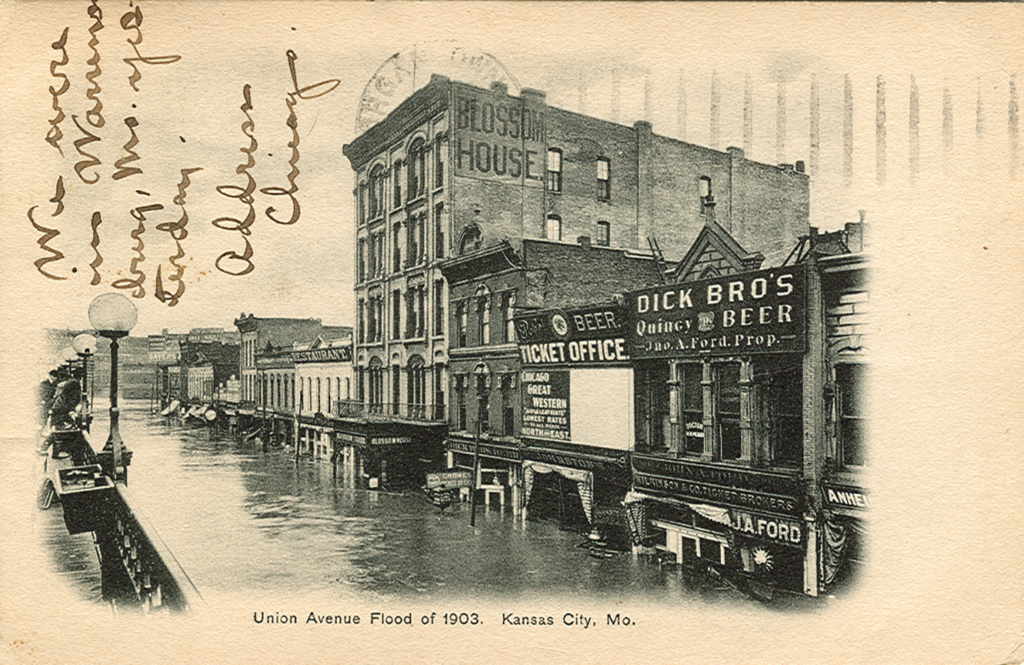
By Michael Bushnell
This black and white photo postcard, published by the Southwest News Company of Kansas City, shows Union Avenue during the Great Flood of 1903.
The Blossom House Hotel, located directly across from the old Union Depot, takes center stage as water can be seen lapping at the second story windows of buildings all along the street. Sunday morning, May 31, 1903, was the beginning of one of the most disastrous floods in the history of Kansas City. The valleys of the Kansas and Missouri rivers were completely flooded, sweeping away bridges, homes and businesses and literally isolating the city from all outside communication.
The West Bottoms area, then a prime industrial area and home to a myriad of meat packing operations such as Armour and Swift, was inundated with water up to 12 feet deep. The old Union Depot on St. Louis Avenue was shuttered for nearly a month while train service was re-routed to other rural depots in nearby towns.
Explosions rocked the East and West Bottoms areas when boxcars filled with lime caught fire. Firefighters were powerless and could only watch from the high points along what is now Cliff Drive and Bluff Road. The police department gave orders to shoot looters and firebugs on sight as the city was facing its worst disaster since the Great Flood of 1844. On June 2, 1903, the Missouri River crested at 34.9 feet, 12.9 feet above the natural river bank. In comparison, the 1908 flood five years later looked like a farm pond, dwarfed also by the floods of 1951 and 1993, when the river crested at 46.3 feet and 48.9 feet, respectively.
The 1903 flood left over 22,000 people homeless. All except 2,500 were from the Kansas City, Kan., area. Miraculously, only 15 lives were lost.
The undivided back of the card is addressed to J.A. Martin, 278 Fayette St., Morgantown, W. Va. The message penned into a corner on the front reads: “We were in Warrensburg, Mo. yesterday. Address Chicago.” The card was posted on April 3, 1907, from Kansas City with the 11 a.m. batch.


















